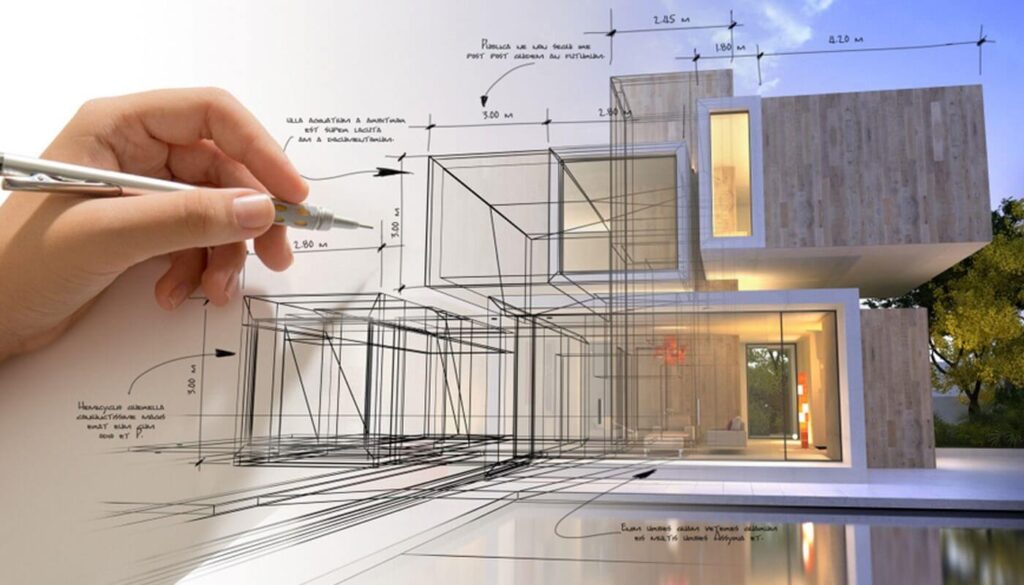Discover Prize-winning Tasks by Prominent CDA Architects
Discover Prize-winning Tasks by Prominent CDA Architects
Blog Article
Recognizing the Collaborative Process Between Engineers and Engineers in Modern Building Projects
The joint process between designers and engineers is vital in contemporary building projects, as it integrates layout intent with design feasibility. Exploring these characteristics exposes insights that could dramatically influence job outcomes and total market standards.
The Importance of Cooperation
The collective synergy in between designers and designers is necessary for the successful understanding of any type of building task. This partnership brings together distinctive know-how and point of views, enabling the combination of innovative layout with useful design services. By collaborating, engineers and engineers can make certain that a project not just meets visual and functional demands but likewise complies with safety, sustainability, and financial constraints.
Partnership fosters a shared vision, promoting the alignment of objectives and assumptions from the outset. This positioning is critical in dealing with prospective difficulties and mitigating dangers that can occur throughout the task lifecycle. In addition, a collaborative method enables the effective appropriation of sources, enhancing both time and price.
The value of cooperation reaches the iterative process of style and building, where comments from designers can educate building choices, leading to more feasible and sustainable designs. On the other hand, designers can influence engineers to believe creatively regarding exactly how to accomplish structural stability without jeopardizing creative intent. Eventually, the collective connection between architects and engineers is not merely advantageous; it is fundamental to the creation of top quality, functional, and innovative constructed settings that fulfill the requirements of society.
Communication Techniques and Devices
Reliable interaction methods and tools are vital for cultivating cooperation between architects and engineers throughout the task lifecycle. Developing clear channels of communication is vital to make certain that all employee are aligned with task goals, timelines, and obligations. Regular conferences, both in-person and online, provide possibilities for stakeholders to review progression, address issues, and make informed choices.

In addition, adopting collective interaction tools, such as Slack or Microsoft Teams, enables for instantaneous messaging, file sharing, and continuous conversations, advertising a more nimble action to arising issues. File administration systems additionally play an important duty in arranging project documentation, making sure that all group participants have accessibility to the most recent info.
Shared Objectives and Job Vision
A linked task vision functions as the foundation for successful collaboration between designers and engineers (cda architects). This shared vision not only lines up the initiatives of both celebrations yet additionally develops an usual structure for decision-making throughout the task's lifecycle. By expressing clear objectives, stakeholders can properly browse the intricacies of modern-day building and construction tasks, ensuring that both visual and useful needs are fulfilled
Developing common objectives includes open discussion and a complete understanding of each technique's payments. Designers usually focus on style intent, spatial relationships, and user experience, while designers stress architectural stability, systems functionality, and compliance with laws. When these viewpoints are straightened, the outcome is a natural task that follows both innovative goals and technical usefulness.
In addition, a distinct job vision fosters liability amongst team participants, motivating each participant to take ownership of their duty in attaining the desired outcome. Regular check-ins and collective workshops can additionally strengthen this dedication, permitting for adjustments to be made as the task progresses. Inevitably, a shared vision not just improves team effort but additionally raises the quality of the last deliverable, resulting in effective job conclusion.
The Function of Modern Technology
Leveraging technology has ended up being crucial in enhancing partnership in between engineers and designers. Structure Information Modeling (BIM) stands out as a critical innovation, enabling both engineers and designers to create comprehensive 3D designs that encapsulate style intent and architectural honesty.
In addition, cloud-based systems allow seamless collaboration, allowing task stakeholders to accessibility and upgrade project data from anywhere. This cultivates a society of transparency and accountability, as adjustments can be tracked and assessed in real-time. Furthermore, mobile applications additional enhance interaction, supplying on-site teams with immediate accessibility to job specifications and updates.
Arising innovations such as synthetic intelligence and artificial intelligence are likewise starting to contribute in predictive evaluation, assisting teams recognize prospective issues prior to they occur. Inevitably, the function of technology in architecture-engineering cooperation not just improves operations effectiveness but likewise enhances technology, resulting in even more successful task outcomes. By welcoming these technological innovations, architects and designers can ensure an extra cohesive and efficient joint process throughout the building and construction lifecycle.
Case Researches in Successful Partnerships
Countless study illustrate the profound influence of effective partnerships in between engineers and engineers on job end results. One noteworthy instance is the cooperation on the High Line in New York City, where landscape designers, designers, and city planners interacted to change an abandoned rail line into a vivid public park. This multidisciplinary approach not only improved the visual top quality but also made sure architectural safety and security and environmental sustainability.

The Burj Khalifa in Dubai even more demonstrates the significance of joint initiatives - cda architects. The assimilation of style and design know-how allowed the project team to attain unmatched heights while adhering to safety and security guidelines and aesthetic vision
These instances highlight the significance of communication, depend on, and shared purposes. In today's complex building atmosphere, such collaborations are vital to navigating difficulties and supplying projects that satisfy both practical and visionary objectives.
Verdict
To conclude, the cooperation in between architects and designers is important for the success of contemporary construction projects. Effective interaction methods, a common project vision, and the assimilation of sophisticated modern technologies are important components that promote this partnership. By promoting a society moved here of responsibility and leveraging devices such as Building Details Modeling (BIM), teams can browse task complexities, making certain that aesthetic, practical, and sustainability objectives are accomplished. Inevitably, this synergy causes cutting-edge and successful job end results.
Report this page